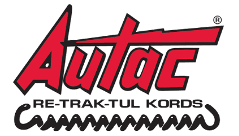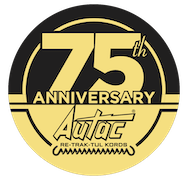In today’s world of mobile devices, flexible tools, and compact workplaces, power cords must be as dynamic as the equipment they support. That’s where spiral power cords, also known as coiled power cables, come in. These cords are designed for flexibility, efficiency, and durability, providing a safe and reliable power connection without clutter or tangles.
From industrial machinery and automotive tools to household electronics, spiral power cords have become an essential part of modern electrical design. This detailed guide explains what spiral power cords are, how they work, their main features, benefits, and the key factors to consider when choosing one.
What Is A Spiral Power Cord?
A spiral power cord is an electrical cable that’s formed into a coiled, spring-like shape. This structure allows it to extend and retract without tangling or twisting. Unlike traditional straight cables that can clutter a workspace or become easily damaged, spiral cords maintain their shape and flexibility, even under constant movement.
The cord’s coiled geometry makes it ideal for devices or environments where cables must frequently stretch and return to their original position — for instance, handheld tools, charging stations, or mobile medical equipment.
Spiral power cords are also referred to as retractile cords, coiled cables, or spring cords, depending on their design and application.
How Spiral Power Cords Work
The working principle of a spiral power cord lies in its elastic structure. The insulation and jacket materials (often polyurethane or thermoplastic elastomer) have enough elasticity to allow the cable to extend when pulled and retract automatically when released.
Internally, the conductors are made of fine-stranded copper, which offers flexibility and prevents breakage during repetitive stretching. The coil design distributes mechanical stress evenly, protecting the internal wiring from fatigue.
When used, the spiral cord stretches to deliver power over a distance. When the connected device moves back or is unplugged, the cable naturally recoils, keeping the work area tidy and safe.
Main Components Of A Spiral Power Cord
A typical spiral power cord consists of several key parts:
-
Conductors: Usually fine-stranded copper wires for high flexibility and conductivity.
-
Insulation: Material surrounding each conductor, preventing short circuits.
-
Outer Jacket: The outer protective layer, made from flexible and durable material.
-
Connectors or Plugs: Ends of the cord that interface with devices or power sources.
-
Coil Design: The spring-like structure that allows extension and retraction.
Each of these elements contributes to the cord’s performance, flexibility, and safety.
Key Features Of Spiral Power Cords
Spiral power cords are known for their unique combination of mechanical and electrical properties. Here are their defining features:
1. Flexibility
The coiled design provides elasticity, allowing the cord to stretch several times its resting length without strain.
2. Durability
High-quality materials like polyurethane or rubber protect against wear, abrasion, oil, and chemicals.
3. Compact Design
When not in use, the cord retracts into a compact coil, saving space and keeping work areas organized.
4. Strain Relief
Prevents damage at connection points where most cables typically fail.
5. Custom Lengths
Available in various lengths and coil sizes, allowing users to choose cords that fit their workspace or tool requirements.
6. High Electrical Performance
Designed to deliver stable voltage and current without interference or power loss.
Advantages Of Using Spiral Power Cords
Using a spiral power cord offers multiple advantages across safety, performance, and maintenance:
1. Enhanced Safety
Because they retract automatically, spiral cords reduce tripping hazards and prevent tangles that can lead to accidents.
2. Extended Lifespan
The coiled structure absorbs stress instead of transferring it to internal wires, protecting against breakage and increasing durability.
3. Space Efficiency
The retractable design minimizes cable clutter, keeping workstations neat and efficient.
4. Easy Handling
Ideal for mobile tools and devices that require frequent movement—no manual winding or untangling is needed.
5. Aesthetic and Professional Look
Spiral cords add a neat, organized, and high-quality appearance to any setup.
6. Versatility
Suitable for both AC and DC applications, depending on insulation and voltage rating.
Common Applications Of Spiral Power Cords
Spiral power cords are used in various sectors due to their adaptability and reliability.
1. Industrial Environments
Used for power tools, robotic systems, conveyor belts, and machinery that requires motion without cable interference.
2. Medical Equipment
In hospitals and laboratories, spiral cords connect diagnostic machines, monitors, and handheld instruments safely and cleanly.
3. Automotive and Transport
Essential for trailer connections, electric vehicle chargers, and workshop tools.
4. Communication Systems
Used in telephones, headsets, and control devices where retractability is crucial.
5. Consumer Electronics
Commonly found in vacuum cleaners, audio systems, hairdryers, and portable chargers.
6. Aerospace and Defense
Used in aviation and military-grade devices requiring reliable performance under extreme conditions.
Materials Used In Spiral Power Cords
Choosing the right material ensures performance, safety, and longevity. The most commonly used materials include:
1. Polyurethane (PUR)
Highly flexible and resistant to abrasion, oil, and chemicals. Excellent for industrial applications.
2. PVC (Polyvinyl Chloride)
Economical and suitable for light-duty applications such as office electronics and household devices.
3. TPE (Thermoplastic Elastomer)
Combines flexibility with excellent thermal and chemical resistance.
4. Silicone Rubber
Ideal for high-temperature and medical applications where cleanliness and flexibility are essential.
Each material type affects how far the cord can stretch, how long it lasts, and how well it resists environmental factors.
How To Choose The Right Spiral Power Cord
When selecting a spiral power cord, consider these key factors:
1. Application Type
Identify whether the cord is for industrial, medical, or domestic use. The environment will determine material choice and power rating.
2. Length and Coil Extension
Ensure the cord can extend to the required working distance without overstretching. Typically, the extension ratio is 1:3 or 1:5.
3. Voltage and Current Rating
Choose a cord with the proper electrical specifications for your devices to avoid overheating or short circuits.
4. Environmental Conditions
Check if the cord will be exposed to heat, oil, moisture, or UV radiation. Choose materials accordingly.
5. Connector Type
Spiral power cords can be customized with molded plugs, sockets, or specialized connectors based on your equipment.
6. Durability Requirements
For heavy-duty applications, select cords with reinforced strain relief and thicker jackets.
Maintenance And Safety Tips
To maximize the lifespan and safety of spiral power cords, follow these best practices:
-
Avoid Overstretching: Do not pull beyond the recommended length to prevent coil deformation.
-
Inspect Regularly: Check for cuts, abrasions, or exposed conductors.
-
Clean Properly: Wipe down with mild cleaning agents; avoid corrosive solvents.
-
Ensure Proper Storage: Store in a dry place, away from direct sunlight or heat.
-
Use Correct Power Load: Match the cord’s voltage and current rating with your device’s requirements.
-
Install Strain Reliefs: Prevent excessive bending near plug ends.
By maintaining your cords properly, you’ll ensure long-term reliability and prevent costly replacements.
Future Trends In Spiral Power Cords
Modern advancements in cable engineering are making spiral power cords smarter and more durable. New trends include:
-
Smart coiled cords with built-in sensors for temperature or current monitoring.
-
Eco-friendly insulation materials that reduce environmental impact.
-
Hybrid power-and-data coiled cables for IoT and automation systems.
These innovations continue to improve safety, efficiency, and sustainability across industries.
Conclusion
Spiral power cords are more than just flexible cables—they’re engineered solutions for efficient, organized, and safe power delivery. Their unique coiled structure offers durability, adaptability, and convenience, making them ideal for industrial machinery, healthcare equipment, and everyday electronics alike.
When choosing a spiral power cord, consider your application’s electrical load, environment, and mechanical demands. The right selection not only enhances performance but also ensures long-term safety and reliability.
In an increasingly dynamic world where devices and equipment must move freely, spiral power cords remain the smart choice for dependable and efficient power management.




Recent Comments